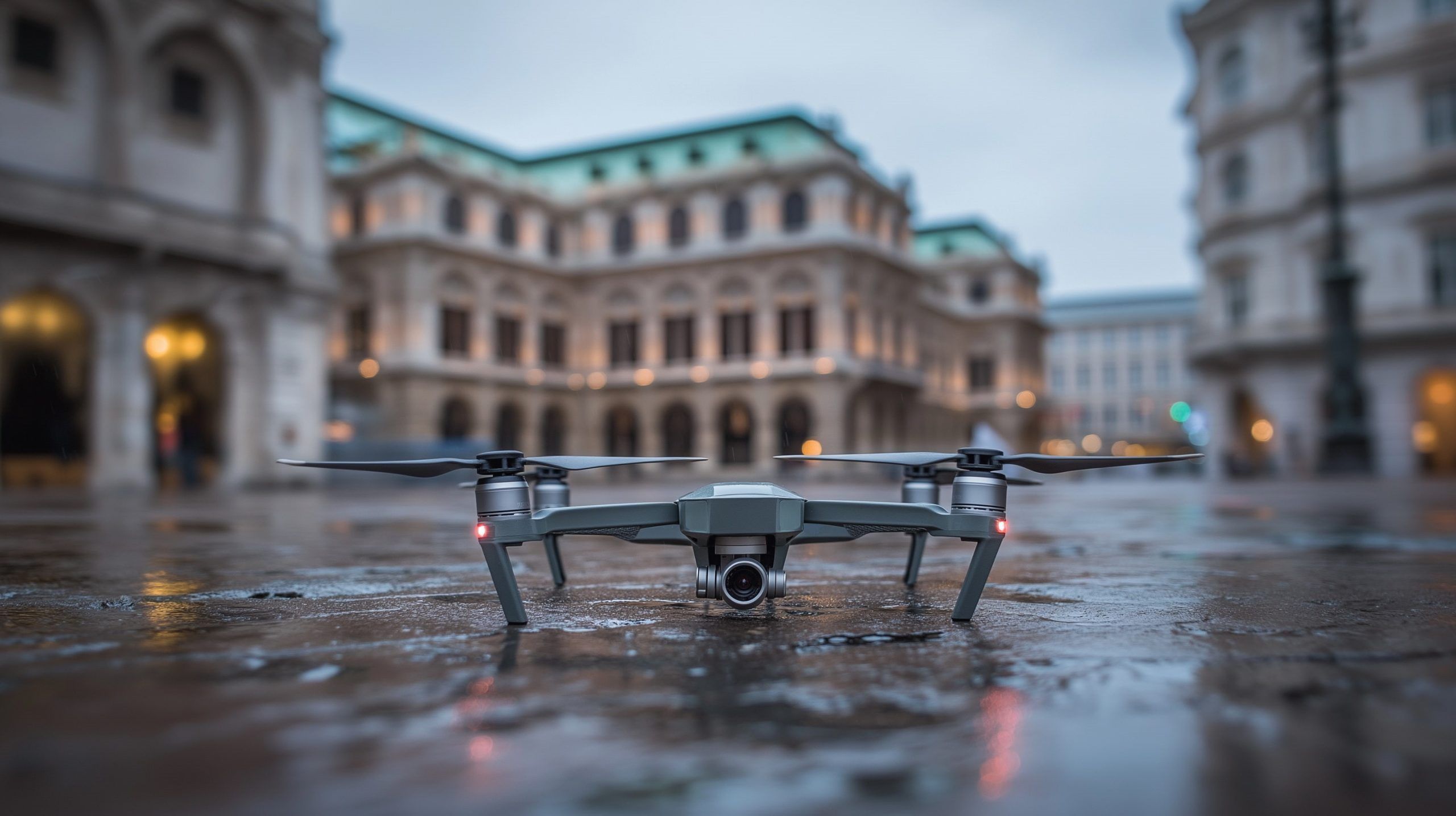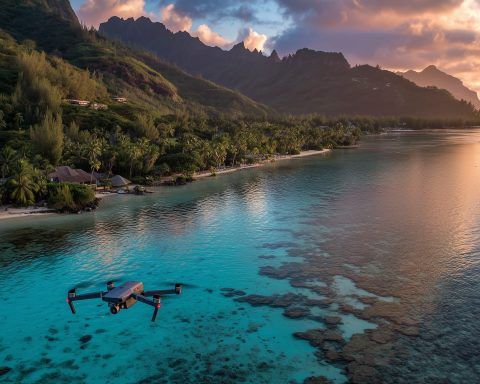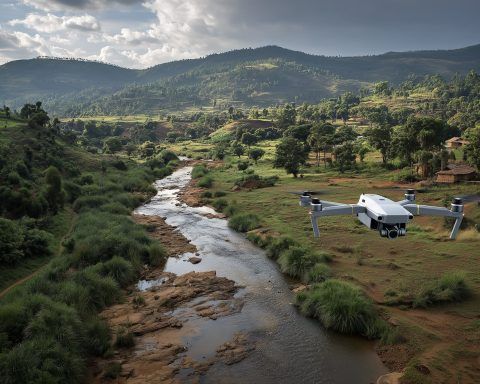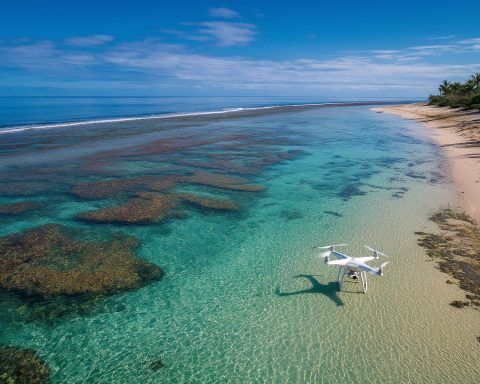- Drone operator registration is mandatory in Austria via Austro Control’s Dronespace, with a typical fee of €30–32 and a registration valid for 3 years.
- The Drone License (Drohnenführerschein) includes an A1/A3 basic certificate and an A2 certificate; both are EU-wide and valid for 5 years after online training and exams.
- Drones under 250 g with no camera are exempt from licensing and registration, and since 12 August 2022, drones under 250 g flying below 30 m in Vienna’s restricted zones do not require an Austro Control permit.
- From 2024, EU rules require class labels (C0, C1, C2, etc.) and Remote ID; Open-category drones must have a class mark or be limited to A3, while Remote ID is required for Specific operations.
- Vienna sits inside a large airport control zone, so virtually any city flight requires Austro Control permission, a process that can take weeks and may cost €500–€700.
- The Open category imposes a maximum altitude of 120 m AGL and requires Visual Line of Sight at all times; night flights require lighting and may need a prior declaration.
- Distance rules specify no overflight of uninvolved people, with A1 avoiding people, A2 requires at least 30 m from non-participating persons, and A3 requires at least 150 m from residential or business zones.
- No-fly zones include Vienna Airport CTR (within about 8 km), government/security sites around Parliament and Hofburg, and historic landmarks such as Schönbrunn Palace and St. Stephen’s Cathedral require permits or avoidance.
- Liability insurance is mandatory with a minimum of 750,000 SDR (roughly €0.9–1 million) for third-party claims, with typical policies costing €50–€100 per year.
- Penalties for violations can reach up to €22,000 per incident, with police intervention, potential drone confiscation, civil liability, and possible criminal charges if air safety is endangered.
Vienna offers stunning aerial views, but prospective drone pilots must navigate a web of strict regulations. In recent years, Austria’s drone laws have been overhauled and harmonized with EU rules, and Vienna in particular imposes additional local restrictions. This comprehensive 2025 guide breaks down everything from recreational vs. commercial use and registration steps, to flight limits, no-fly zones, insurance, penalties, and the latest law changes. Adhering to these rules is crucial – Austrian authorities enforce them rigorously, with steep fines for violations. Let’s explore the key legal aspects of flying a drone in Vienna.
Recreational vs. Commercial Drone Use in Vienna
Austrian law (aligned with EU regulations) no longer separates “recreational” and “commercial” drones by purpose – instead, requirements are based on the risk category of the operation [1] [2]. All drone pilots, whether hobbyists or professionals, must follow the aviation rules set by Austro Control (the national aviation authority) [3]. Most casual flights fall under the “Open” category of EU drone rules, which covers low-risk operations: drones under 25 kg flown within visual line-of-sight (VLOS) and below 120 m altitude [4]. In this Open category, no advance permit is required for each flight, regardless of recreational or commercial intent, as long as you meet the standard requirements (discussed below) [5]. This means a person flying for fun and a business using a drone for photography can both operate without individual flight permits if they stay within Open-category limits.
However, commercial operations often involve scenarios that exceed Open category limits – for example, heavier drones, flights over busy urban areas, or beyond line-of-sight. Such cases typically fall into the “Specific” category, which does require prior authorization from Austro Control [6]. In practice, any drone mission not covered by the basic Open rules (especially in cities or for advanced use) will need a special permit or certification, and the operator must conduct a risk assessment and implement safety measures before flying. For instance, a professional film crew wanting to fly a large drone over downtown Vienna or near people may need Austro Control’s specific permission even if they are licensed, whereas a tourist flying a small drone in an empty field would not. Importantly, both recreational and commercial pilots are subject to the same baseline obligations: you must register as a drone operator and obtain the required pilot competency certificate if your drone is above the exempt weight or capability (more on this below) [7]. The main difference is simply that professionals are more likely to invoke higher-risk categories (and thus need extra approvals), while hobbyists usually operate in low-risk settings.
Exception for tiny drones: Austria does provide some relief for the smallest drones. Drones under 250 g have fewer requirements – they are exempt from pilot licensing and even registration if they have no camera and qualify as toys [8] [9]. In Vienna, until recently even these micro-drones required a permit to fly in the city, but that has changed (see “Vienna-Specific Regulations” below). In short, flying a sub-250g mini drone for fun is comparatively easier (no training course needed), whereas any drone with significant weight or a camera triggers full compliance (registration, exams, etc.). Commercial use of any drone essentially removes any remaining slack – all drones used for work must be registered and insured, and if the operation doesn’t fit the Open category (which many commercial ops won’t), a special Austro Control approval and higher-level certification are mandatory [10]. The bottom line: Vienna’s laws treat recreational and commercial pilots equally under the law, but the nature of commercial work often means stricter oversight (through the Specific category permit process) and a need for thorough documentation (like flight plans and risk assessments) [11].
Austrian Aviation Laws vs. Vienna’s Local Regulations
Austria’s drone laws are primarily defined at the federal level through the Austrian Aviation Act and EU-wide drone regulations. These set the nationwide rules – for example, the requirement to register, the categories of operation, and general flight restrictions. Since 31 Dec 2020, the EU Drone Regulation (Reg. 2019/947) has applied in Austria, standardizing rules such as the Open/Specific categories across all member states [12] [13]. However, the EU framework allows member countries to designate “geographic zones” with local restrictions or conditions [14]. Austria has done so, and Vienna is a special case: almost the entire city lies within a designated restricted airspace due to the presence of Vienna International Airport and other sensitive areas.
In fact, Vienna sits inside the airport’s control zone, which Austro Control has labeled a “restricted flight area” for drones [15]. What this means is that any drone flight in Vienna’s metropolitan area requires special permission. By default, drone operations are not allowed in Vienna without a permit from Austro Control [16]. This local rule is stricter than the general Austrian law for other regions – it’s essentially an urban no-fly zone unless you apply for authorization. The reason is to protect the busy airspace and dense population of the capital. If you open an official drone zone map of Austria, Vienna appears as a large red zone indicating flights are restricted [17].
Recent easing for sub-250g drones: Recognizing the low risk of tiny drones, Austro Control announced a change effective August 12, 2022: drones weighing <250 g and flying below 30 m altitude no longer require a permit to fly in restricted areas (like Vienna) [18] [19]. This was a significant relaxation – previously, even toy drones needed explicit permission to fly in the city. Now, if you have a DJI Mini or similar ultralight drone, you can legally fly it in Vienna without obtaining a prior Austro Control permit, provided you keep it under 30 m (about 98 ft) height [20]. Anything heavier than 250 g or flying higher than 30 m still requires a permit within Vienna’s restricted zone [21]. In practical terms, this means most “serious” camera drones (which often weigh 500 g, 1 kg or more) will need a permit to fly in the city, as will any kind of extended-altitude flight. The <250 g exemption mainly benefits hobbyists with mini-drones and encourages safer, lower-altitude flying in urban areas.
Outside of Vienna’s special zone, drone pilots must still obey all national rules – but they won’t typically need a flight-specific permit in most of Austria if flying under Open category rules. For Vienna, however, you must plan ahead and apply to Austro Control for permission if your flight doesn’t qualify for the small-drone exemption. The permit application requires details like your planned flight area, time, purpose, drone specs, safety measures, etc., and proof that you hold all necessary certifications and insurance [22] [23]. Austro Control reviews the request and, if satisfied, will issue a flight permit with conditions (e.g. specific date/time, max altitude, coordination requirements). This process can take a few weeks and costs on the order of €500–700 in fees [24] [25]. Drone pilots granted a permit for Vienna will receive a formal notice and must even notify certain local authorities by phone before takeoff (the permit document will list any such requirement, like informing the police or air traffic control shortly before you fly) [26].
Other local rules: Aside from the aviation-specific restrictions, Vienna drone operators should also heed general local laws. Privacy and data protection laws mean you cannot film people without consent or spy on private property [27]. Vienna’s many parks and gardens might have their own rules (for instance, Schönbrunn Palace and its grounds explicitly ban drones without prior permission) [28]. Nature reserves and wildlife areas (like the Donau-Auen National Park on Vienna’s outskirts) are typically no-fly zones to protect animals – disturbing wildlife with a drone could violate conservation laws [29]. In one case, a drone hovering over a Carinthian castle’s eagle show caused safety concerns, and authorities noted that under the new rules any drone flight posing a danger to animals must be terminated immediately [30]. So, local Vienna regulations boil down to: get Austro Control’s approval for city flights, and respect all other venue-specific and privacy rules. Always check for signage – for example, many tourist sites post “No Drones” signs at entrances – and when in doubt, ask local authorities before flying. Vienna’s combination of federal law and local restrictions makes it one of the stricter environments for drones, but these rules are aimed at ensuring safety in a dense, historic city.
Drone Registration and Licensing Requirements
Drone registration is mandatory in Austria for virtually all drones used in Vienna, whether for fun or business. Under the EU-wide system, you register yourself (or your company) as a drone operator, not each individual drone [31] [32]. This one-time operator registration is done through Austro Control’s online platform (Dronespace), and it assigns you a unique registration number. You must affix this number on all drones you own or fly (for example, with a sticker or marker) [33] [34]. The logic is that authorities can trace any drone back to its registered operator if needed. Registration in Austria involves a small fee (around €30–32) and is valid for 3 years before renewal is required [35]. (The system may prompt annual confirmation, but officially the fee-based renewal cycle is triannual.) Upon registration, you’ll receive an e-mail or PDF certificate with your Operator ID. Flying an unregistered drone is illegal and can incur heavy fines [36], so this is step one for every Vienna drone pilot.
Which drones require registration? Almost all, except the very small and harmless. According to EU rules adopted by Austria, if your drone weighs 250 g or more, you absolutely must register [37]. Even if it’s lighter than 250 g, registration is still required if the drone has a camera or can capture personal data, unless it’s a certified “toy” per EU toy safety standards [38]. (In practice, most camera-equipped mini-drones like DJI Mini series are not classified as toys, so their operators do need to register.) The only users exempt might be kids flying a tiny toy drone indoors or in their yard – anything beyond that scope needs an operator ID. Austria saw a huge compliance push with the new rules: by mid-2021, roughly 19,000 drone operators had registered in Austria as the EU system kicked in [39].
Drone pilot licensing (the “Drone License” or competency certificate) is the next requirement. Austro Control calls this the “Drohnenführerschein” (drone driver’s license), and it is essentially an online training and exam that all pilots of drones over 249 g must complete [40]. Even for smaller drones, if you intend to fly them in certain ways (e.g. at night or in closer proximity to people), you might need a certificate. There are two main levels for the Open category: A1/A3 basic certificate (achieved via a free online course and a ~40-question online exam) and A2 certificate (which involves a somewhat more advanced exam or in-person test) [41] [42]. The A1/A3 certificate is required for all pilots flying drones above 250 g (and for smaller drones with cameras, in practice) – it covers fundamental knowledge of air law, safety, and operating procedures [43]. Passing the test is mandatory – but fortunately, it’s done online on the Dronespace platform and is free of charge [44]. Once you pass, you can download your remote pilot certificate, which is valid for 5 years and recognized throughout the EU. You must carry this proof of competency (digitally or printed) when flying [45], and present it to authorities on request.
For more advanced operations (like flying a heavier drone closer than 50 m to people), the pilot must also obtain the A2 certificate, which involves additional study (on topics like meteorology and more in-depth flight safety) and a supervised exam. Commercial operators often hold an A2 to have flexibility in operations. Austro Control reports that about 29,000 “drone licenses” had been issued in Austria by early 2021, indicating widespread uptake of pilot training [46]. In summary, before flying in Vienna you need to: register as an operator, label your drones with your ID, complete the online training/exam, and obtain your pilot certificate. The only exception is if you use a truly toy-grade drone under 250 g and only fly it in the most basic scenarios – but even then, you still must adhere to all safety rules. Skipping registration or flying without the license (when required) is considered a violation of the Aviation Act [47]. It’s easy to comply: the registration and training portals are available in English, and Austro Control’s Dronespace app/website guides users through the process [48]. Once these steps are done, you’re legally cleared to operate drones in Austria, subject to the operational restrictions outlined next.
Flight Permissions and Operational Limitations
Drone operations in Vienna (and Austria generally) must follow strict flight rules designed to protect other aircraft and people on the ground. Here are the key limitations every pilot should know:
- Maximum Altitude: 120 m (400 ft) above ground level. This is a hard ceiling for drones in the Open category across the EU [49] [50]. In Vienna’s airspace, staying below 120 m is crucial to avoid interfering with civil aviation traffic. Even at 120 m, you should be mindful of your surroundings – Vienna has a busy airport and hospital heliports where manned aircraft might be lower. If any manned aircraft (plane or helicopter) is nearby, you must immediately give way – descend or land to eliminate any risk [51]. The ÖAMTC (Austrian Auto Club) emphasizes that estimating altitude by eye can be tricky, especially with Vienna’s hills and tall buildings, so it’s best to keep well below 120 m unless you have a flight authorization to go higher [52]. Note that the 120 m limit is measured from ground directly below the drone; if you fly from a hill or building, that counts in the height.
- Visual Line of Sight (VLOS) is required at all times. You (or an accompanying observer) must always be able to see your drone with the naked eye during flight [53]. Using binoculars, FPV goggles alone, or relying solely on the camera feed is not considered VLOS. In practice, keep your drone close enough to maintain orientation and see if it’s clear of obstacles. Flying beyond line of sight is not allowed in the Open category – it would require a Specific category operation with special approval. VLOS also implies daylight or civil twilight operations are the norm; night flying is allowed only if your drone has proper lighting and you still maintain visual awareness (and it might require a prior declaration to Austro Control in some cases).
- Distance from People and Property: Drones cannot fly directly over uninvolved people on the ground, and you must maintain a safe horizontal distance from crowds, buildings, vehicles, and critical infrastructure. The exact distance isn’t one-size-fits-all; it depends on your drone category:
- In subcategory A1 (for very small drones), you should avoid overflying people but it’s tolerated if incidental (never over “assemblies of people,” though) [54].
- In A2, you must keep at least 30 m distance from non-participating persons, or as low as 5 m if the drone has a low-speed mode engaged [55]. This essentially means no flying over busy streets, sidewalks, or parks where people are present, unless you have everyone’s consent or they are part of the operation.
- In A3, you should be far from people and urban areas – specifically at least 150 m away from residential, commercial, or industrial zones [56].
- Regardless of category, common sense and safety prevail: you must not endanger anyone. Austrian guidance stresses that even “hand-sized” drones can injure people or damage property (e.g., sharp propellers) [57]. So, you are required to choose remote areas or get proper permissions if people might be underneath. Flying over crowds (sporting events, concerts, demonstrations) is strictly prohibited without a special permit – it would likely fall under a high-risk scenario not allowed in Open category at all.
- Keep away from airports and aircraft. It is absolutely forbidden to fly a drone anywhere near active air traffic without permission. Austrian rules specify that drones must keep a large distance (up to 8 km) from airports and airfields [58]. In Vienna, this includes not just the international airport in Schwechat, but also any smaller heliports (e.g., at hospitals or the downtown helipad). “Immediate vicinity of airports” is off-limits unless you have explicit clearance [59]. Even with a Vienna flight permit, you might be required to coordinate with air traffic control if you’re flying in controlled airspace. The standard Austro Control permit for Vienna will list if you need to call ATC or airport authorities before and after the flight [60]. As a general rule, never fly above 30–50 m if you’re within a few kilometers of an airport’s boundary, and always yield right-of-way to any crewed aircraft.
- No-fly zones and geo-fenced areas: Beyond airports, other zones may be marked off-limits on official maps. Austria uses a system of “geographic zones” (GZ) visible on the Dronespace map and the ÖAMTC Drone Info app [61]. These include:
- Control Zones (CTR): airspace around major airports (like Vienna’s) where drone flights need air traffic control consent.
- Flight restriction zones: e.g., around military facilities, power plants, or city centers where authorities have banned drones for security. Vienna has such security-sensitive zones (discussed in the next section).
- Nature reserves: areas protected for wildlife, where drones might disturb animals (these might be seasonal too, e.g., bird nesting sites).
- The Dronespace/ÖAMTC interactive maps let you input a location and will tell you what restrictions apply there [62]. It’s highly recommended to consult these maps before any flight – they will show if you are in a green zone (okay to fly), yellow/orange (caution or restrictions), or red (no fly without permit).
- No dangerous goods or dropping of objects: Drones may not carry or drop dangerous materials – for instance, you cannot fly explosives, fireworks, or similarly hazardous payloads on your drone [63]. You’re also not allowed to drop any objects from a drone during flight (this would require special authorization if, say, you were doing drone deliveries or dispersing something from the air). Essentially, your drone should be used only for observation, photography, or benign tasks, not as a delivery or spraying platform unless specifically cleared by authorities in the Specific category.
- Additional operational rules: Drone pilots must be at least 16 years old (for most drone operations) [64]. Younger pilots can fly small toys under adult supervision, but to be a registered operator or certified pilot, 16 is the minimum age in Austria. Always conduct pre-flight checks – ensure your drone is in good working order, firmware updated, batteries charged, return-to-home set, etc., because a malfunctioning drone can quickly become a hazard. Austria doesn’t impose a blanket ban on flying in rain or wind, but pilots are expected to only fly in safe weather conditions. Strong winds that could carry your drone away or rain that could cause a short-circuit are factors that could lead to you being cited for unsafe operation if an incident occurs.
In summary, when flying in Vienna, stick to <120 m height, keep your drone in sight, far away from people and airports, and fly only in safe locations. These are fundamental. If your mission requires breaking any of these (e.g., filming a dense area or going above 120 m for a special project), you must obtain a higher-category permit from Austro Control first. Abiding by these limits not only keeps you legal but also greatly reduces the chances of accidents. Vienna’s skyline may be tempting, but it’s also patrolled – police and Austro Control monitors do watch for rule-breakers, especially near sensitive sites. As one Austrian expert put it: as a drone pilot you are at all times a participant in air traffic [65] – that carries responsibilities to operate with the same caution expected of a full-sized aircraft pilot.
No-Fly Zones in Vienna
Vienna, as a capital city, has numerous no-fly zones and restricted areas where drones cannot be flown (or only under tight conditions). Pilots must familiarize themselves with these geographic no-fly zones to avoid serious trouble. Here are the major categories of restricted areas:
- Airport and Airfield Zones: The most prominent no-fly area is around Vienna International Airport (VIE). There is a large radius (several kilometers) around the airport in which drone operations are prohibited or heavily restricted [66]. This “airport exclusion zone” is meant to prevent any interference with arriving or departing aircraft. Within roughly 8 km of any airport or heliport, you should assume there is a no-fly or restricted zone [67]. Vienna’s airport control zone actually covers a big portion of the city’s airspace. Smaller airfields and heliports (such as hospital heliports in Vienna, or the military airport at Langenlebarn outside the city) also have protected airspace. In practice, you cannot fly near Vienna Airport at all without explicit coordination with air traffic control – and Austro Control will not grant hobbyists permission to fly anywhere close to runways. Even for professional operators, getting permission to fly near the airport is extremely difficult and would require a very strong justification and safety case.
- Government and Security-Sensitive Sites:Drone flights are forbidden over or near sensitive government buildings and infrastructure in Vienna [68]. This includes places like the Austrian Parliament, the Presidential office (Hofburg Palace complex), embassies, police stations, and military barracks. The reason is security – authorities worry about drones for spying or worse. These locations are often designated “security zones” where unmanned aircraft are not allowed. If you fly near, say, the Parliament or a foreign embassy, you can expect law enforcement response and confiscation of your drone. Vienna’s police have zero tolerance for drones over high-security areas, especially given incidents worldwide. Always keep a wide berth – for example, the area around Ballhausplatz (where the Chancellery is) or the UN complex in Donaustadt are definite no-fly areas. Some of these restrictions are not immediately obvious on a map, so consulting local authorities or Austro Control if you plan to be near any government site is wise. It’s safe to assume all federal government buildings and critical infrastructure in the city are off-limits without special clearance.
- Historic Landmarks and Tourist Sites: Vienna’s rich historical heritage also comes with protections. Many famous landmarks are either no-fly zones or require special permission to film. For instance, Schönbrunn Palace, Belvedere Palace, Hofburg Palace, and St. Stephen’s Cathedral are iconic sites where authorities discourage drone flights to preserve the sites and ensure visitor safety [69]. These areas tend to be crowded with people (which already violates the “no flying over people” rule) and may also be within Vienna’s restricted urban zone. In fact, the Schönbrunn Palace administration explicitly prohibits drones without prior arrangement – they even list “No drones allowed” in their visitor guidelines [70]. Filming or photographing these sites from the air typically requires multiple permissions: Austro Control’s flight permit and the site management’s approval for photography. St. Stephen’s Cathedral (Stephansdom), located in the heart of the city, is a notable example – it’s surrounded by pedestrian zones and tight streets, making any drone flight potentially dangerous and illegal without a permit. Moreover, the cathedral and its square are protected from unmanned flights except for authorized media or police use. In short, do not attempt to fly at Vienna’s major landmarks on your own. If you absolutely need aerial shots of these places (for film production, etc.), you must go through a formal permission process. This involves contacting the site (for example, the Schönbrunn group for palace grounds) and submitting a detailed request or contracting a licensed drone company that has permits [71] [72]. Typically, you’ll need insurance and a professional pilot, and even then flights might be restricted to certain times (like early morning when tourists are absent).
- Urban Areas and “No-Drone” zones: As mentioned, essentially the entirety of inner Vienna is a controlled zone requiring Austro Control’s consent. But there are also smaller-scale no-drone zones that pop up: for example, temporary no-fly zones can be declared during high-profile events (such as international summits, major sports events, or visits by foreign dignitaries). Austrian law allows issuing NOTAMs (Notice to Airmen) that ban drone flights over certain areas for limited times – pilots should check Austro Control notices if any special event is happening. Additionally, Vienna’s city parks may have rules against drone take-offs and landings (even if the airspace above isn’t otherwise restricted). Vienna’s municipal Park Regulations forbid activities that disturb other visitors, under which drone flying could be cited. Always look for signage at parks – some larger parks or gardens explicitly say no model aircraft or drones.
- Nature and Wildlife Reserves: While Vienna is urban, it has green areas and the Vienna Woods on its outskirts. Nature reserves (Naturschutzgebiete) or the Danube wetlands have environmental regulations. For example, in bird nesting season, flying a drone in certain wetlands could violate wildlife protection laws. The Austrian Alpine Club notes that flying in mountain national parks or nature zones can lead to fines if done without permission [73]. Around Vienna, the Lobau wetlands (part of Donau-Auen National Park) is one such sensitive area – drones could stress protected bird species, so they are effectively banned there unless specifically allowed for research. If you’re not sure whether an area is protected, use the drone zone maps or consult local environmental authorities.
What if you need to fly in a restricted zone? For legitimate purposes like news media coverage, filmmaking, surveying, or research, it is possible to get exceptions. Vienna’s authorities have a protocol: you must apply well in advance for a special flight permission [74]. This often means submitting a formal application to Austro Control (for the aviation side) and to the local authority or property owner if applicable. Your application should detail why the drone flight is necessary, the exact location, time window, route, altitude, and safety measures you will take [75]. For example, a film company might explain they will cordon off an area, fly at 6 AM when no people are around, use a drone observer, etc. The authorities will review and potentially grant a conditional permit just for that operation [76]. Conditions might include having a pilot with a higher license, a specific insurance cover, police supervision, or only flying at certain hours. If you receive such a permit, you must adhere strictly to its terms.
To summarize the Vienna no-fly landscape: airports, government sites, and crowded historic areas are essentially no-drone zones for hobbyists. Violating these will lead to severe penalties (detailed later). Always use official resources to “know before you fly” – the Dronespace map [77] or the ÖAMTC Drone Info app [78] are invaluable tools that combine all no-fly zones and conditions. They’ll inform you if your planned take-off point is clear or if you need special permission. By heeding these no-fly zones, you’ll avoid the worst legal pitfalls and help keep Vienna’s airspace safe and respectful of its landmarks.
Insurance Requirements for Drone Pilots
Liability insurance is mandatory for drone operators in Austria – this includes anyone flying in Vienna. Drones are considered aircraft under the law, and just like car drivers or private pilots, you must have insurance to cover potential damage or injury to third parties. Austria’s Aviation Act requires a minimum of 750,000 Special Drawing Rights (SDR) in liability coverage for any drone operation [79] [80]. SDR is an IMF currency unit; 750,000 SDR is roughly equivalent to €0.9–1 million in coverage (the exact euro value can fluctuate, but it’s on the order of one million euros). This means your insurance policy must be able to pay out up to that amount in case, for example, your drone crashes through someone’s window, causes an injury, or triggers an aircraft incident.
Before flying, you should secure a drone-specific insurance policy (a general personal liability policy usually won’t cover aircraft). Many insurers in Austria offer “drone Haftpflicht” policies. Often, model aircraft association membership includes an insurance, or you can buy a standalone policy for around €50–100 per year depending on coverage limits. The policy should explicitly state it meets the requirements of Luftfahrtgesetz (Aviation Act) § 164 or related provisions – essentially that it’s valid for drones and for that minimum SDR amount. Proof of insurance should be carried with you when flying. In fact, if you apply for a Vienna flight permit, Austro Control will ask for a copy of your insurance certificate to ensure it meets the 750k SDR rule [81]. Failing to have insurance is not only illegal but puts you at enormous personal financial risk – consider that if your drone interfered with a passenger plane, the damages could be massive. Even a small accident, like causing a cyclist to crash, could result in costly claims.
Key points about insurance:
- It must cover third-party liability (damage to others). It doesn’t need to cover damage to your own drone (that’s optional hull insurance).
- The coverage must be valid in Austria (if you’re visiting from abroad, ensure your policy isn’t restricted to your home country – many international drone pilots get a policy that covers EU countries to be safe).
- 750,000 SDR (~€1 million) is the legal minimum for drones under 25 kg in the Open category [82]. If you operate very large drones or do higher-risk activities, consider a higher coverage limit. For most hobby and small commercial uses, policies with €1–3 million coverage are common.
- Government operators (like police or military drones) are exempt from the insurance requirement by law [83], as the government self-insures. But everyone else (companies, clubs, individuals) must have it.
Keep in mind that if an incident occurs and you cannot produce valid insurance, you will face not only fines for breaking the law but also personal liability for any damages. Austrian authorities have reminded pilots that lack of insurance doesn’t mean lack of responsibility – you would still be on the hook for costs and could be sued by victims. Therefore, getting insured is a fundamental part of legal drone flying in Vienna. It’s a relatively small expense for a lot of peace of mind. Many drone pilots in Austria carry their insurance confirmation (in German or English) either printed or on their phone, alongside their registration and license documents, in case of a spot check by police or an accident. In summary: don’t take off without being insured – it’s as important as having your propellers on tight.
Penalties for Violations of Drone Laws
Vienna’s drone laws carry serious penalties for those who break them. Enforcement is strict, and authorities have not been shy about issuing fines. Under Austrian law, most drone-related offenses are treated as administrative violations (Verwaltungsübertretungen), enforced by the local district authorities. The penalties can range widely depending on the severity of the violation, but they can be very steep – up to €22,000 in the worst cases [84] [85]. Yes, you read that right: flying a drone illegally in Austria can, in theory, cost as much as a new car.
For typical violations like flying an unregistered drone, not having a license, or breaching a no-fly zone, fines in the thousands of euros are not uncommon [86]. For example, someone caught flying a heavier drone in Vienna without the required permit or registration could be looking at a fine on the order of €3,600 (a figure cited as a starting point for certain infractions) [87]. That can escalate if there are aggravating factors (repeat offense, actual harm caused, etc.). The law sets the maximum penalty per incident at €22,000, which is generally reserved for the most egregious cases – say, a drone that endangers a passenger aircraft or crashes into a crowd causing injury [88]. “Up to €22,000” is a strong deterrent figure that Austrian officials often mention to underscore the importance of compliance [89].
In practice, how are these penalties applied? If you violate drone rules in Vienna, a few things might happen:
- Police intervention on the spot: Vienna police are trained and authorized to handle drone incidents. If you fly somewhere you shouldn’t (e.g., over a crowd or near a government building), police may approach you, order you to land the drone, and could confiscate the drone on the spot as evidence [90]. Confiscation can also occur for repeat offenders or if the drone was clearly modified for illegal use. They will take your details and file a report.
- Administrative proceeding: The case is referred to the Bezirkshauptmannschaft (District authority) or magistrate in charge of aviation offenses. You’ll receive a notice of violation and proposed fine. You typically have a chance to respond or contest it, but unless you have a very strong defense, the fine will be imposed.
- Fines and payment: Fines can be a set amount or daily-rate fines. Austrian authorities consider factors like the gravity of violation and your personal financial situation when levying fines, but drone fines tend to be substantial given the potential risk. For example, in one region officials explicitly warned that any breach of the EU drone regulation carries a penalty framework up to €22,000 [91] – this means even if they don’t max it out, they have that leeway.
- Other consequences: If your drone flight caused actual damage or injury, you could face civil liability or even criminal charges. For instance, negligently causing bodily harm could be a criminal matter in addition to the administrative fine. Also, privacy violations (e.g., filming people in their home without consent) can lead to separate penalties under data protection laws [92]. As for illegal surveillance or flying in prohibited military areas, one could imagine charges related to espionage or national security, albeit those would be extreme scenarios.
To give an idea, Austrian sources note that common misunderstandings (like thinking you can fly without registering or in any location) can land pilots in legal hot water quickly [93] [94]. Enforcement examples include tourists fined heavily for flying drones in Vienna’s city center without permission, or hobbyists penalized for flying too close to an airport approach path. Even if you plead ignorance, authorities have made it clear that “I didn’t know” is not a valid excuse – the onus is on the pilot to know the rules [95].
Repeated or deliberate violations will increase penalties. If you are caught multiple times flouting the rules, fines can accumulate and potentially reach that upper limit. The law also allows authorities to ban an individual from drone operations if they prove to be a persistent troublemaker. For professionals, violations could jeopardize your certifications or permits.
One particularly dangerous act is flying in a way that endangers manned aircraft – this is taken extremely seriously (possible criminal charges for endangering air safety). While fortunately rare, if a drone were to force an aircraft to evade or, worse, cause an accident, the operator could face imprisonment in addition to astronomical fines.
In summary, violating Vienna’s drone laws is not worth the risk. Fines can easily reach four or five figures in euros [96], and authorities have explicitly warned of the €22k upper limit to drive the point home [97]. The best case if you break the rules is losing your drone and paying a hefty fine; the worst case could involve injuries and serious legal liability. Thus, every drone pilot should strictly follow the regulations we’ve outlined – not only for safety, but also to protect your wallet and record. Austro Control and local police do enforce these laws, and with the proliferation of drones, enforcement is only increasing each year.
Recent and Upcoming Changes (2024–2025)
The drone law landscape is continually evolving. In 2024–2025, there have been a few important changes and expected developments affecting drone operations in Vienna:
- EU Drone Regulations Full Implementation (2024): The EU rules that took effect in 2021 had a transitional period to accommodate older drones. By January 1, 2024, those transitions ended and the rules are fully in force [98]. One big change is the requirement for drone class identification labels and Remote ID. Starting in 2024, all drones operating in the Open category must either have a class label (C0, C1, C2, etc.) or, if they have no label (because they were sold before 2023), they are restricted in how they can operate [99]. For example, older drones without class marking above 250 g are now essentially limited to A3 subcategory (far from people) operations. New drones sold in 2024 and beyond in Europe are coming with these class labels which dictate which subcategory they can fly in (e.g., a C1 drone can fly in A1 over people under certain conditions). As a pilot, you should be aware of your drone’s category and ensure you fly it according to the updated rules.
- Remote Identification (RID) requirements: Along with class labels, the EU introduced Remote ID to enhance drone traffic management. As of Jan 1, 2024, drones in the Specific category and all class-labelled drones in the Open category must broadcast a remote ID signal [100]. In practice, most new consumer drones have this built-in (they transmit a signal with the drone’s ID, position, speed, and operator info). If you have an older drone that lacks Remote ID, Austria has been considering requiring add-on broadcast modules, but at the moment the focus is on drones with class marks (since older drones without class marks can still be flown in limited scenarios). What this means for Vienna pilots: if you buy a new drone, make sure to activate Remote ID (if it’s an option in the app) because it’s legally required. Authorities may use receivers to check drones for compliance. Remote ID will allow law enforcement to identify drones in the sky more easily, which in a city like Vienna is helpful for security. It’s part of the push towards integrating drones into the airspace safely. Expect Austro Control to increasingly emphasize Remote ID compliance in 2024 and beyond – it’s wise to keep firmware up to date and follow any instructions from manufacturers about enabling the Remote ID feature [101].
- Vienna Mini-Drone Exception (2022 change): We discussed this earlier, but to reiterate because it’s recent: in August 2022, Austro Control lifted the permit requirement for sub-250 g drones under 30 m in restricted zones [102]. This significantly simplified flying tiny drones in Vienna. Through 2023 and 2024, this has enabled many hobbyists and tourists to use mini drones (like the DJI Mini series) in the city legally (still following general rules). This change has been well received [103], as it made low-risk drone flying more accessible. If you fall in this category, remember that all other rules still apply – the exemption was only about not needing Austro Control’s area permit. You still must register and have a certificate if the drone has a camera, and you must avoid no-fly zones like those over gatherings or sensitive sites [104]. Austro Control may revisit altitude or weight thresholds in the future, but as of 2025 the <250g and <30m exemption stands.
- Standard Scenarios and Specific Operations: In late 2023 and into 2024, EASA and Austro Control have been developing Standard Scenarios (STS) for certain higher-risk operations. For example, an STS-01 allows certain building-inspection flights in populated areas under a predefined risk mitigation plan. By 2024, Austria accepts these standard scenarios: an operator can just declare conformance to the STS (rather than do a full custom application) to get authorization [105]. This is more relevant for commercial operators – e.g., film companies or infrastructure inspectors in Vienna might use a standard scenario to streamline permission to fly over an urban area at a certain height. It’s worth checking Austro Control’s dronespace for any new guidance on Specific category operations if you plan to do something beyond the Open category. The goal is to make it easier to get approval for advanced flights by using standardized safety procedures.
- Ongoing legislative updates: Austria’s Ministry (BMK) has indicated that drone laws will continue to be finetuned. For instance, rules for the Certified category (for heavy drones, air taxis, etc.) are still being developed at the European level [106] – these likely won’t affect hobbyists directly, but it shows the legal framework is expanding to new use cases. In Vienna, the city authorities are constantly evaluating how to manage drones – don’t be surprised if new local bylaws emerge, perhaps to regulate take-off from city property or to impose quiet hours for drones, etc. Also, privacy regulations are tightening in many places; while not drone-specific, any changes in data protection law (like use of aerial cameras) might affect drone operations (e.g., requiring you to do a Privacy Impact Assessment if using drones for surveillance).
- Increasing Enforcement and Awareness: By 2025, Austrian officials have ramped up public education on drones. The ÖAMTC released information dispelling common myths (like “I can fly wherever since it’s a small drone” – which they correct by citing the up to €22k fines) [107]. Expect more spot checks and more integration of drone monitoring systems (perhaps Remote ID receivers in cities). Vienna’s law enforcement may also start using counter-drone technology in high-security areas (to detect and if necessary disable rogue drones). For law-abiding pilots, this just means make sure you’re clearly following the rules and broadcasting Remote ID if required, so there’s no confusion about your drone’s intent.
- Future proposals: Looking beyond 2025, topics like drone highways (U-space), further insurance adjustments, and night-time specific rules could come up. The EU is working on a comprehensive drone traffic management (U-space) which Austria will implement, potentially in urban areas like Vienna first. This might mean by 2025–2026, certain sections of airspace could be managed with automated authorization – one day you might request a corridor in a digital app and get immediate clearance if the system deems it safe. For now, that’s not yet operational, but pilots should stay tuned to Austro Control announcements for pilot programs or new digital requirements.
In conclusion, the 2024–2025 period has mostly been about tightening and fully enforcing the existing rules (registration, Remote ID, class marks) and refining the permit process for advanced flights. Vienna’s core drone laws remain strict, but the regulators are also finding ways to accommodate low-risk flying (like the mini-drone exemption) and enable professional use (through standard scenarios). It’s crucial for drone users in Vienna to stay updated – what was legal a year ago might need a new procedure this year. Regularly check Austro Control’s drone website and news [108], and consider joining local drone clubs or forums where updates are shared. By staying informed on the latest rules, you can enjoy drone flying in Vienna safely and legally, capturing those beautiful cityscapes without endangering anyone or facing unpleasant fines. Happy (and responsible) flying!
Sources:
- Austro Control – Official Austrian aviation authority guidelines for drones [109] [110] [111] [112].
- Dronespace.at – Austro Control’s drone platform (FAQs, maps, and rules in English) [113] [114] [115].
- BMK (Austrian Ministry) – Drone Regulation Press Release, Dec 2020 [116] [117] [118].
- DeinDrohnenpilot.at – “Flying a drone in Vienna” guide (Dimitri Wolf, updated 2022) [119] [120] [121].
- ÖAMTC Drone Info – Common misunderstandings and clarifications on drone law [122] [123] [124].
- Medium (Sulman Khan) – “Can You Fly a Drone in Vienna? A Comprehensive Guide” (2024) [125] [126] [127].
- MeinBezirk.at (Villach) – Interview with Austro Control’s Markus Pohanka on new drone rules and penalties [128] [129] [130].
- UAV Coach / Drone-laws.com – Summaries of Austria drone laws (2023–2025) [131] [132] [133].
- Schönbrunn Palace Official Site – Visitor rules (no drones allowed) [134].
References
1. www.meinbezirk.at, 2. www.meinbezirk.at, 3. sulmanofficial.medium.com, 4. www.meinbezirk.at, 5. www.meinbezirk.at, 6. www.meinbezirk.at, 7. sulmanofficial.medium.com, 8. www.bmimi.gv.at, 9. drone-laws.com, 10. sulmanofficial.medium.com, 11. sulmanofficial.medium.com, 12. www.meinbezirk.at, 13. www.meinbezirk.at, 14. www.dein-drohnenpilot.de, 15. www.dein-drohnenpilot.de, 16. www.dein-drohnenpilot.de, 17. www.dein-drohnenpilot.de, 18. www.dein-drohnenpilot.de, 19. www.dein-drohnenpilot.de, 20. www.dein-drohnenpilot.de, 21. www.dein-drohnenpilot.de, 22. www.dein-drohnenpilot.de, 23. www.dein-drohnenpilot.de, 24. www.dein-drohnenpilot.de, 25. www.dein-drohnenpilot.de, 26. www.dein-drohnenpilot.de, 27. www.oeamtc.at, 28. www.schoenbrunn.at, 29. www.oeamtc.at, 30. www.meinbezirk.at, 31. drone-laws.com, 32. drone-laws.com, 33. www.austrocontrol.at, 34. drone-laws.com, 35. drone-laws.com, 36. drohnenfluege.tirol, 37. drone-laws.com, 38. drone-laws.com, 39. www.meinbezirk.at, 40. www.austrocontrol.at, 41. www.dronespace.at, 42. www.dronespace.at, 43. www.bmimi.gv.at, 44. www.bmimi.gv.at, 45. www.bmimi.gv.at, 46. www.meinbezirk.at, 47. drohnenfluege.tirol, 48. www.austrocontrol.at, 49. www.dronespace.at, 50. www.oeamtc.at, 51. www.oeamtc.at, 52. www.oeamtc.at, 53. www.dronespace.at, 54. drone-laws.com, 55. www.oeamtc.at, 56. drone-laws.com, 57. www.oeamtc.at, 58. drone-laws.com, 59. uavcoach.com, 60. www.dein-drohnenpilot.de, 61. www.dein-drohnenpilot.de, 62. www.dein-drohnenpilot.de, 63. www.dronespace.at, 64. uavcoach.com, 65. www.oeamtc.at, 66. sulmanofficial.medium.com, 67. drone-laws.com, 68. sulmanofficial.medium.com, 69. sulmanofficial.medium.com, 70. www.schoenbrunn.at, 71. www.schoenbrunn-group.com, 72. www.wien-tickets.com, 73. www.alpenverein.at, 74. sulmanofficial.medium.com, 75. sulmanofficial.medium.com, 76. sulmanofficial.medium.com, 77. www.dronespace.at, 78. www.dein-drohnenpilot.de, 79. www.austrocontrol.at, 80. drone-laws.com, 81. www.dein-drohnenpilot.de, 82. www.austrocontrol.at, 83. drone-laws.com, 84. www.meinbezirk.at, 85. www.oeamtc.at, 86. sulmanofficial.medium.com, 87. sulmanofficial.medium.com, 88. www.meinbezirk.at, 89. www.oeamtc.at, 90. sulmanofficial.medium.com, 91. www.meinbezirk.at, 92. www.oeamtc.at, 93. www.oeamtc.at, 94. www.oeamtc.at, 95. www.oeamtc.at, 96. sulmanofficial.medium.com, 97. www.oeamtc.at, 98. drone-laws.com, 99. drone-laws.com, 100. drone-laws.com, 101. drone-laws.com, 102. www.dein-drohnenpilot.de, 103. www.dein-drohnenpilot.de, 104. www.dein-drohnenpilot.de, 105. uavcoach.com, 106. www.bmimi.gv.at, 107. www.oeamtc.at, 108. www.austrocontrol.at, 109. www.austrocontrol.at, 110. www.austrocontrol.at, 111. www.dronespace.at, 112. www.dronespace.at, 113. www.dronespace.at, 114. www.dronespace.at, 115. drone-laws.com, 116. www.bmimi.gv.at, 117. www.bmimi.gv.at, 118. www.bmimi.gv.at, 119. www.dein-drohnenpilot.de, 120. www.dein-drohnenpilot.de, 121. www.dein-drohnenpilot.de, 122. www.oeamtc.at, 123. www.oeamtc.at, 124. www.oeamtc.at, 125. sulmanofficial.medium.com, 126. sulmanofficial.medium.com, 127. sulmanofficial.medium.com, 128. www.meinbezirk.at, 129. www.meinbezirk.at, 130. www.meinbezirk.at, 131. uavcoach.com, 132. drone-laws.com, 133. drone-laws.com, 134. www.schoenbrunn.at










